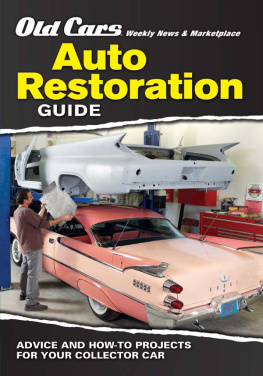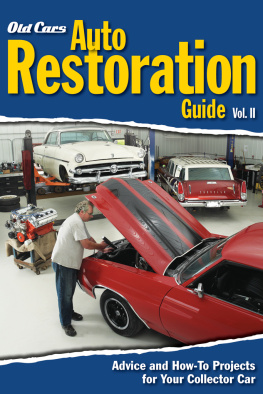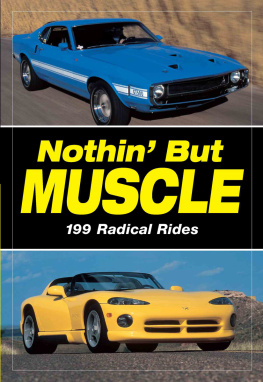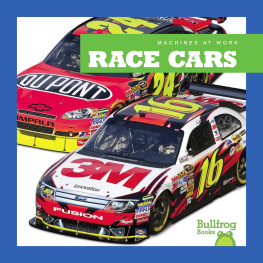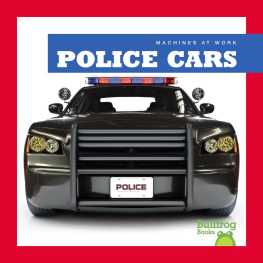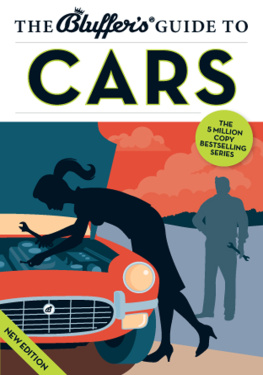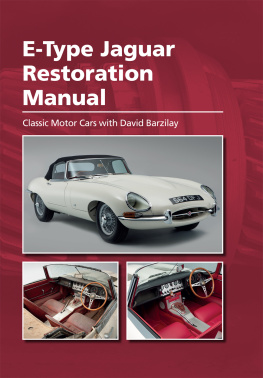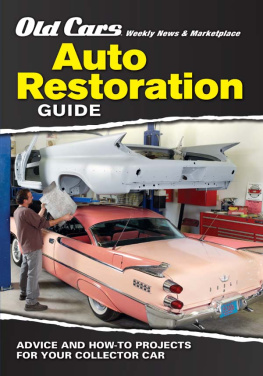Old CarsWeekly News & Marketplace
Auto
Restoration
Guide

ADVICE AND HOW-TO PROJECTS
FOR YOUR COLLECTOR CAR
FOREWORD
T he old car hobby and do-it-yourself type folks just seem to go together. Behind almost every old car is an owner who is at least somewhat mechanically inclined. They might not be able to swap out an engine themselves, sew in new upholstery or paint their vehicle like a pro, but they usually know one end of a wrench from the other. And most importantly, the majority of old car hobbyists seem to have a sense of patience, self-confidence and can-do optimism that fuels their passion. And lets face it, its a lot easier and more practical to be involved in the old car hobby if you can actually work on your own car and not rely on your buddy down the road or the local shop every time your car has a little issue that needs to be fixed.
Its for all the folks out there bloodying their own knuckles and solving their own problems that we offer the Old Cars Weekly Auto Restoration Guide. Inside we offer restoration advice and how-to information from a variety of professional sources, as well as from regular Joes who just happen to know a lot about how to fix and restore vintage cars.
Its inspiring to hear all the stories about car owners and their struggles and triumphs with their antique vehicles. Hopefully, this book supplies a little inspiration in return.
From the staff of Old Cars Weekly and Old Cars Report Price Guide
SECTION ONE
RESTORATION
TIPS
RESTORATION UNDERWAY
Make these rules and tips your guide

Most cars follow my $20,000 rule, which is most cars considered No. 3s by Old Cars Price Guide will cost $20,000 to purchase as reliable, show-going drivers. Those cars priced at less than $20,000 will require a total investment of about $20,000 to get them in show-going condition. This 1955 Hudson Hornet, pictured at the Iola Old Car Show, is a good example of the rule.
By Gerald Perschbacher
O K, so the car isnt perfect. But with a little bit of work, I can have a great show car and lots of fun!
This line of thought is often played when a hobbyists stands before a collector car with dreams of ownership and enjoyment. But lets get the record straight. Only a small percentage of cars will deliver outstanding virtues for a minimum of effort and cost.
There are some rules and tips I have noticed over the years. Here they are.
RULE #1:
About 15 years ago, I employed the $5,000 rule. I havent heard of anyone else with this same rule, but it worked for me and could have been applied to many others. If you were in the mood to buy a basic old car back then, it would cost the accumulative amount of $5,000. That could be realized several ways. If the car was purchased for $1,000 you could expect to put another $4,000 into it to bring it up to par. That might mean some engine work, interior work, and new paint with a fair percentage of work also being done yourself. If the car cost $3,000, I expected to put $2,000 into itprobably for brakes, exhaust, carburetor rebuild, boiled gas tank, the general process.
That rule held up well. Of course, there were exceptions. Understandably, an ultra-expensive Classic or super-rare model would be above the $5,000 figure. The amount was mainly applied to what could be called bread-and-butter cars, the basic transportation of the bygone day. So Fords, Chevrolets, Chryslers, Dodges, Mercurys, even medium-priced Packards and especially Studebakers, Hudsons and Nashes from the 1940s and 1950s were prone to the rule.
Exceptions at the extreme low end were not covered by the $5,000 rule, either. This would mean a near-basket case car or junked car (with numerous parts missing) could have sold for $200 but it would have taken the equivalent of $8,000 or more to make the vehicle presentable and reliable.
Today, you could apply a new version of that rule with the dollar amount around $20,000, given higher costs for restoration and repairs. With this in mind, if you plan to purchase a 1964 Studebaker Hawk or 1935 Plymouth, you will probably have an accumulated expenditure of $20,000 before the vehicle is reliable and presentable. If you want a 1957 Corvette or Thunderbird, the amount will be higher. As for a Packard Twelve from 1937, $20,000 could be a small puddle in a big bucket, since initial purchase price will be high, not counting successive upgrades. Nevertheless, the idea of a $20,000 rule will hold in many common purchases.
So when you stand in front of a potential new old-car acquisition to your collection, realize that the price tag may state $7,000 but the overall cost will probably near $12,000.
RULE #2:
Take a friend when you want to buy a car or are considering a restoration. This is an outstanding rule, and could save you many dollars and much frustration. Frequently, a buyer is dazzled by the car and looks past what may be small problems. A friend who is knowledgeable about the brand and vintage can spot problems that may become giant headaches after the purchase.
For example, a little click in the engine may not be the sign of a major problem, but a friend who knows engines may quickly diagnose the problem as a potential portent of major engine repair running into thousands of dollars. A friend who knows the sly propensity of exterior rust may realize there is a hidden problem of rusted inner panels that could mandate a major body repair. Noting broken or missing trim parts and the need for replating fragile pieces are other observations friends can make while the potential buyer just sees inner dreams of speeding down the road to a car show.
A friend who has walked the restoration road can offer sage advice. That friend may save you money and many moments of hardship. Learn from others.
RULE #3:
Dont jump at the price. Negotiate, especially if the car is a candidate for restoration. Some years ago, a car collector was telling the tale of his purchase of a 1949 Cadillac Sedanet. The seller had a truly fine, low-mileage car in very presentable condition inside and out. In fact, the interior was nearly perfect and the exterior was sporting most of its original paint in top condition. The cars history was known and documented. But the price, while not extremely high, was more than the buyer wanted to pay.
So he walked around and listed weaknesses on a notepad. Then he assessed the amount of cost needed to fix each of the problems. He took the asking price and then deducted from that point, based on the potential repairs. Soon the car was half-priced, and the seller agreed on the figure. The buyer then proceeded to put well over $5,000 into the car for many unforeseen little problems such as electrical grounding and paint touch-up. As time progressed, he consoled himself with the initial wise purchase and the rise in value on the model, which offset the costs he had incurred.
On a related note, see if you can negotiate on restoration costs. For example, if a missing part needs to be found, do it yourself. This could reduce the cost-per-hour rate of the shop off of your billing when it involves making phone calls and placing an order which you could have handled. If the shop is willing to negotiate in other areas of work, set the standard before you commit the car to their care.

